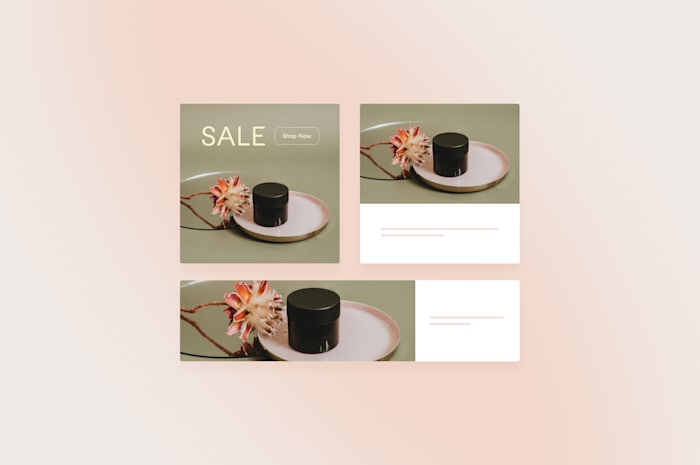How To Start a Print-On-Demand (POD) Business
Learn how to start a print-on-demand business with this 7 step tutorial. Get the information you need to make money by creating custom products.
 November 5, 2024
November 5, 2024 7 minute reading
7 minute reading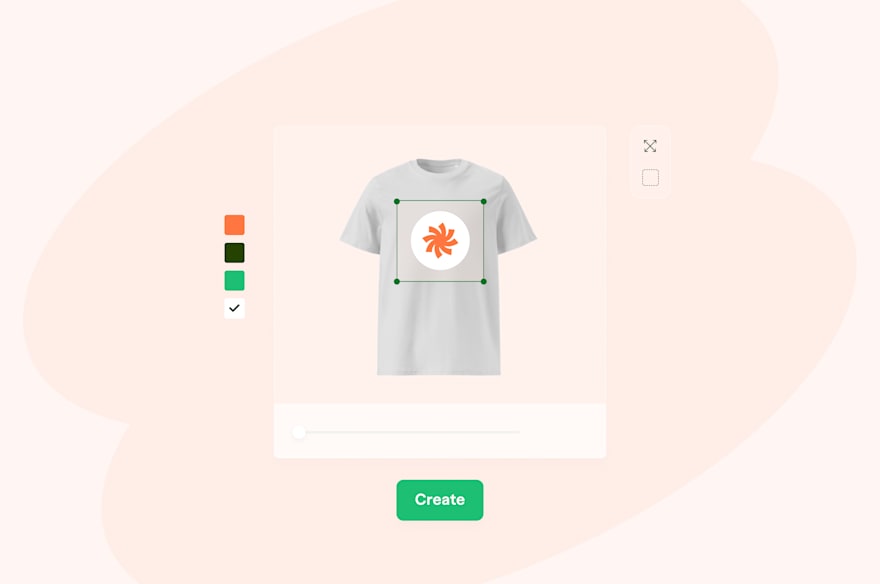
Want to start an online business without the headaches of inventory and shipping?
Print-on-demand (POD) offers the perfect solution for aspiring entrepreneurs. This low-risk business model lets you sell custom products, from t-shirts to phone cases, without holding stock or handling order fulfillment.
The timing couldn't be better: the POD market is growing at 6.7% annually, and studies show that 65% of customers now prefer personalized items.
Whether you're looking to turn your creative passion into profit or build a flexible side hustle, this step by step guide will walk you through everything you need to know, from product research to launching your store.
What is print-on-demand?
Print-on-demand is a digital printing service that produces custom-designed products only after they've been ordered.
The process is remarkably straightforward: you create a design, upload it to a POD platform, and your work becomes available on everything from t-shirts to coffee mugs.
When a customer places an order, the platform prints, packages, and ships your creation directly to their doorstep. You never touch the inventory, yet your creative vision reaches customers worldwide.
This dropshipping model has become a breakthrough for:
Independent artists monetizing their work
Entrepreneurs testing market waters
Small businesses expanding their reach
Content creators launching merch lines
Non-profits spreading their message
The beauty lies in its flexibility. Testing new designs? Launch them instantly. Customer preferences changing? Adapt your offerings overnight. No stashed inventory means you're free to experiment, evolve, and grow your business organically.
How to start a print-on-demand business for beginners
Building a successful print-on-demand (POD) business requires careful planning and execution. Below is a detailed guide on how to get started.
1. Find a niche
A well-chosen niche can lead to stronger customer loyalty, better market positioning, and higher profit margins.
Your niche should align with both market opportunity and your interests. When approached correctly, even a smaller, focused market can be highly profitable.
Here's how to discover your ideal niche:
Analyze market trends: Use powerful tools like Google Trends, Instagram Insights, and TikTok's Creative Center to spot rising opportunities. Look for topics gaining steady interest rather than temporary fads.
Define your target audience: Get specific about who you'll serve. Instead of "pet owners," think "urban dog parents who prioritize organic treats" or "cat lovers who collect artistic pet portraits."
Study your competition: Don't just glance at competitor websites. Dive deep into their social media engagement, customer reviews and complaints, price points and positioning.
Start with 2-3 potential niches and spend a week researching each before making your final decision.
The most successful businesses don't try to serve everyone. They excel by solving specific problems for a defined group of people. Whether you're passionate about sustainable fashion, vintage gaming, or gourmet cooking, there's a niche waiting for your unique approach.
💡 Pro Tip: Consider getting market research specialist services on Fiverr to conduct an in-depth niche analysis. They can provide valuable insights about market size, competition, and profit potential before you commit to a direction.
2. Create designs

Eye-catching designs are where your brand truly comes to life. The right designs can drive stronger engagement, create instant brand recognition, and generate higher conversion rates.
Whether you're starting from scratch or refreshing your brand, great design speaks directly to your target audience's preferences and needs.
Here's how to develop designs that resonate:
Create your own: Perfect for those with design skills who want complete creative control and unique branded visuals.
Get professional graphic design services: Ideal when you need expert-level designs that elevate your brand and save you valuable time.
Customize templates: A cost-effective solution that lets you adapt proven designs to match your brand's unique style.
Let your designs reflect your brand's voice and values through carefully chosen visuals. Maintain the same color schemes, fonts, and design elements across all your materials.
Start with hiring a graphic designer on Fiverr for one test design. Check their portfolio for work in your niche, and provide clear references of styles you like. This approach lets you evaluate their work before committing to a larger design package.
3. Choose a POD platform
Selecting the right print-on-demand company is a big decision that impacts your profit margins and product quality. Each platform offers unique advantages that could make or break your business success.
Here are the best print-on-demand services to choose from:
Printful
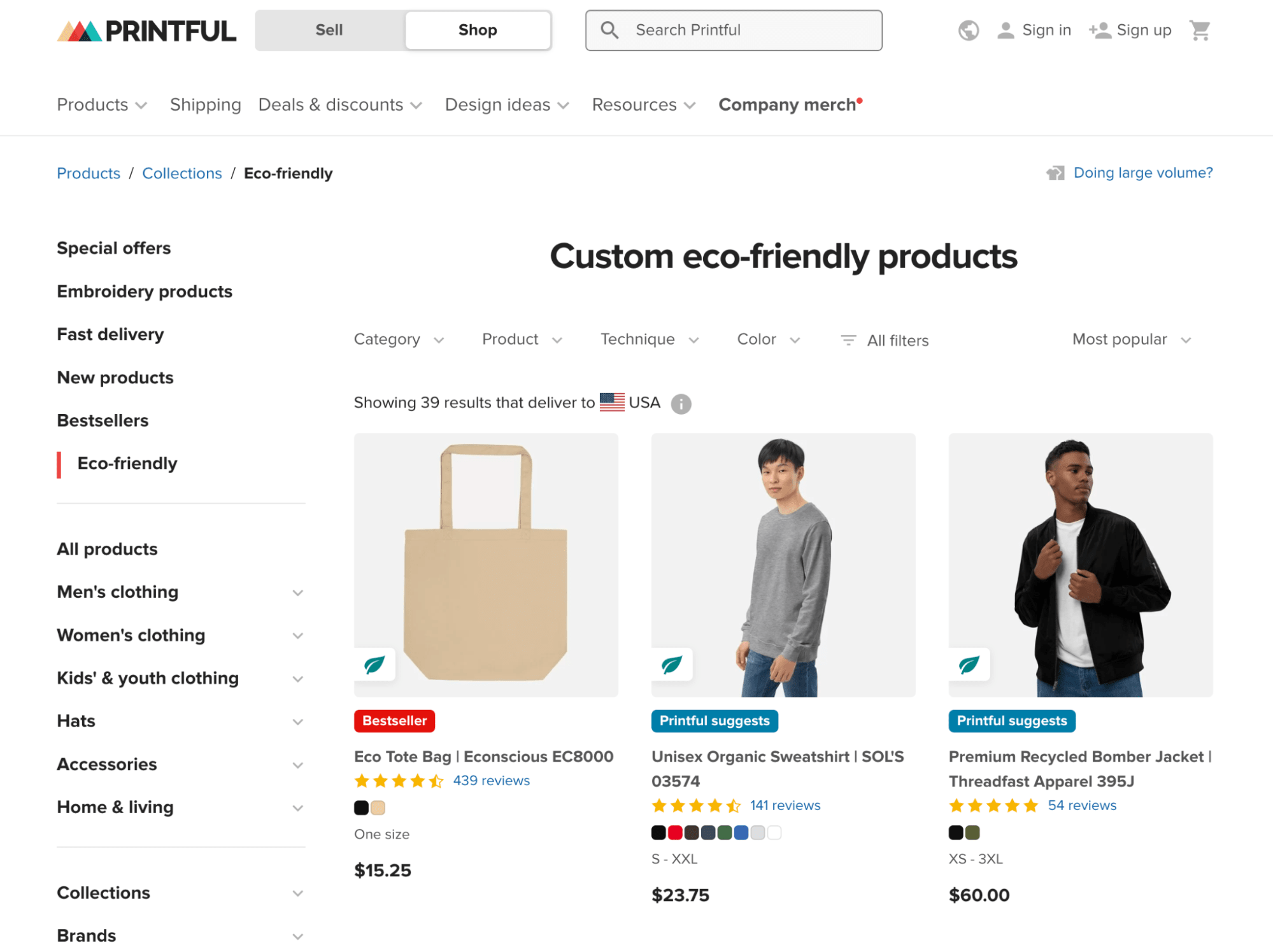
Printful
Printful's wide range of clothes, accessories, and home decor attracts POD business owners. Printful works well with Shopify and Etsy and produces high-quality prints. It’s known for consistent, high-quality printing and professional packaging.
Printify
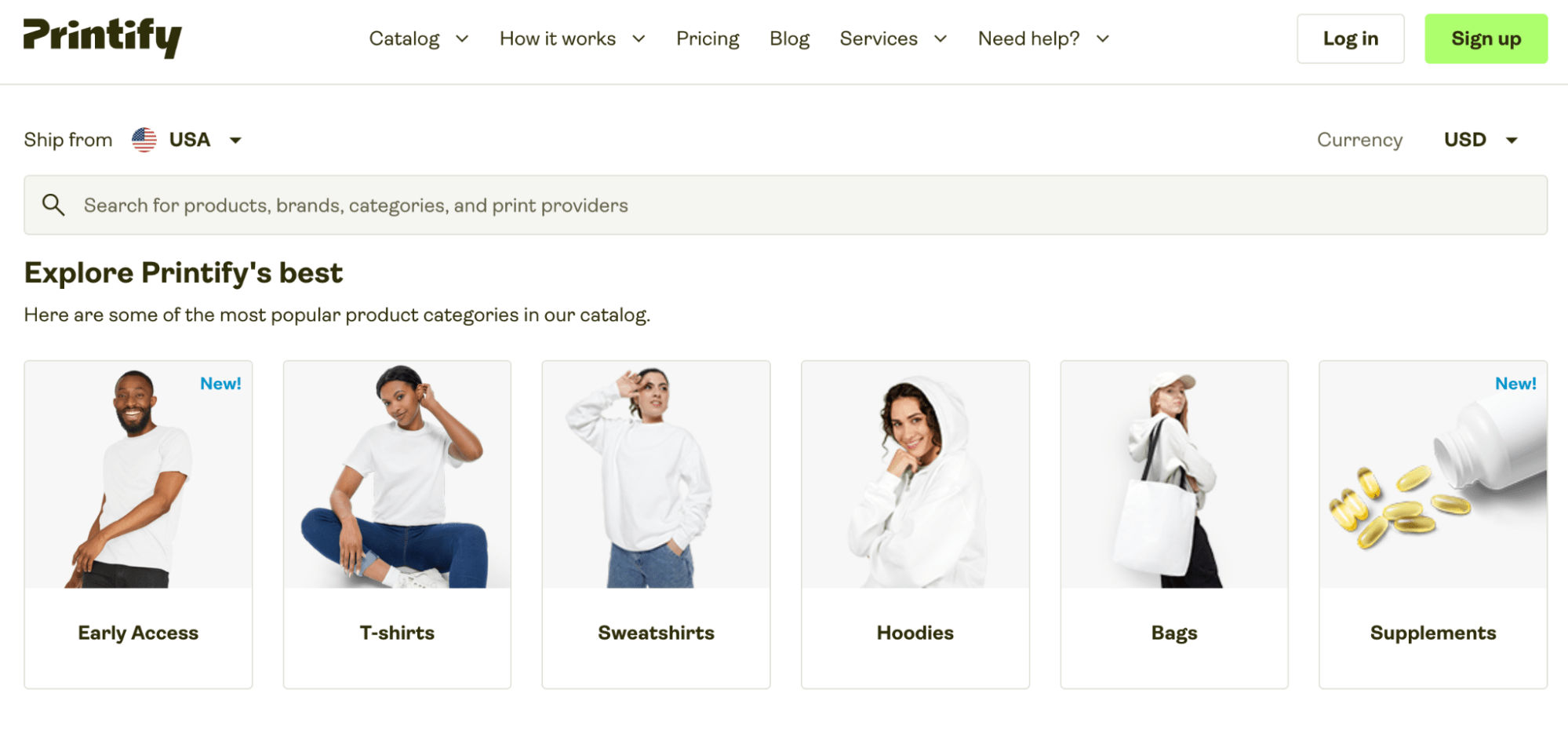
Printify
Printify is unique because of its low prices and global print provider network. Business owners who want to grow steadily will love this platform. It’s ideal for testing a range of products with minimal upfront investment.
Gelato
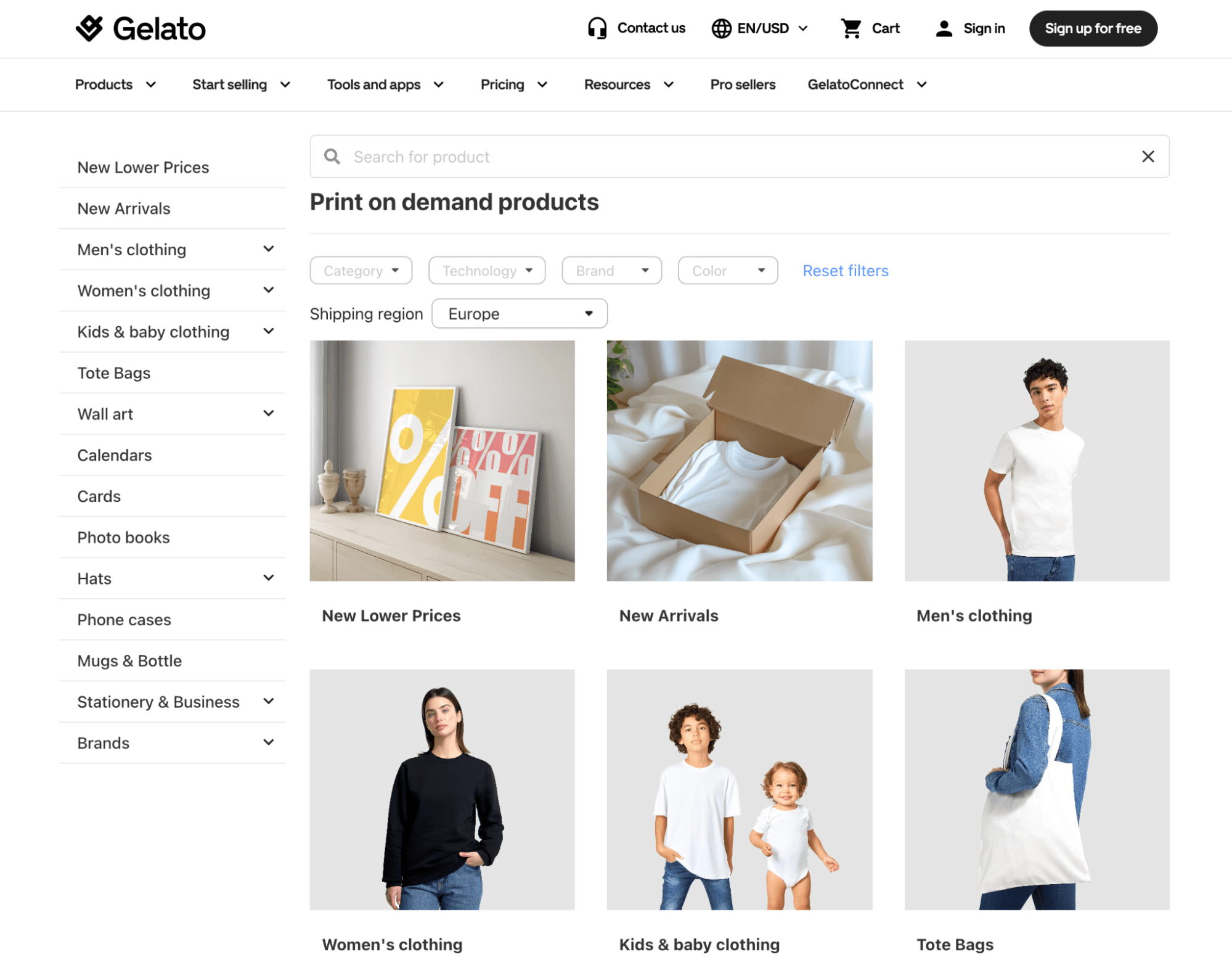
Gelato
Gelato can reach people worldwide thanks to its printing partners in more than 30 countries. Global companies seeking fast shipping, high-quality goods, and durability should consider this option.
Redbubble
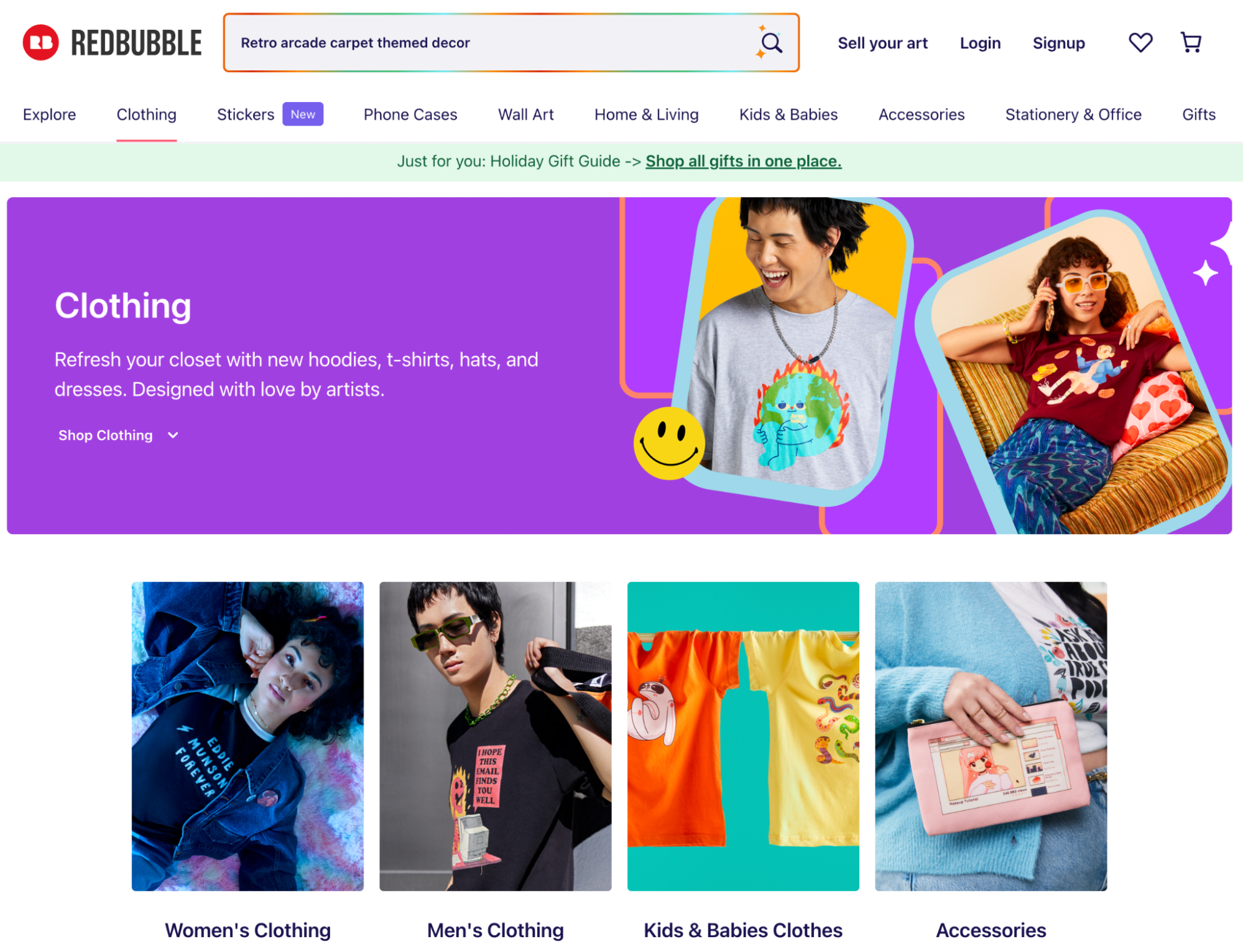
Redbubble
Redbubble showcases designers' and artists' print-on-demand goods. Unlike other sites, Redbubble takes care of everything after you upload your designs. You can start selling immediately without setting up a print-on-demand store.
Your choice should align with your business goals, target market, and operational preferences. Consider factors like print quality, delivery times, and integration capabilities when making your decision.
4. Select products
Choosing the right products can make the difference between a thriving business and one that struggles to find its footing. Your product selection should reflect both your niche's needs and your brand's identity.
Some ideas to include in your product catalog are:
Wardrobe essentials: T-shirts and hoodies remain the cornerstone of POD success. They offer fantastic margins while turning your customers into walking brand ambassadors.
Tech accessories: Phone cases blend high profit margins with constant demand.
Home décor: Pillows and posters let customers transform their living spaces with your artwork while providing you with higher-than-average profit margins.
Daily use items: Mugs, tote bags, and accessories offer year-round gift potential with practical value.
It's better to master a few product lines initially than to spread yourself too thin. Focus on perfecting your bestsellers before expanding your catalog.
💡 Pro Tip: Order samples of your top 3 products and test the quality, durability, and print results. Share authentic photos of these samples on social media. Potential customers appreciate seeing real products rather than mockups.
5. Set prices
Understanding your pricing power helps you build both sustainable profits and market share. Your prices need to cover costs while remaining attractive to your target audience.
Each POD platform charges differently for products and printing, so calculate your base costs carefully to ensure healthy profit margins.
Here's a practical formula for pricing your POD products:
Base Cost + Platform Fees + Profit Margin = Retail Price
Let's break this down with a real example:
T-shirt base cost: $8.95
Shipping cost: $4.99
Platform fee (15%): $2.09
Your target profit: $10.00
Final retail price: $26.03 (round to $26.99)
Your prices can flex based on your brand positioning. If you're offering premium designs or serving a luxury niche, you might set higher margins. Just ensure your target audience aligns with your pricing strategy.
Create a simple spreadsheet to track each product's costs, prices, and margins. Update it monthly as platform fees and production costs change to maintain your desired profit levels.
6. Create your online store
Building an online store is important for your POD success, as it serves as your digital storefront, drives customer trust, and enables sales. Some sellers will use online marketplaces like Amazon or eBay, but it’s best to create your own store where you control your image.
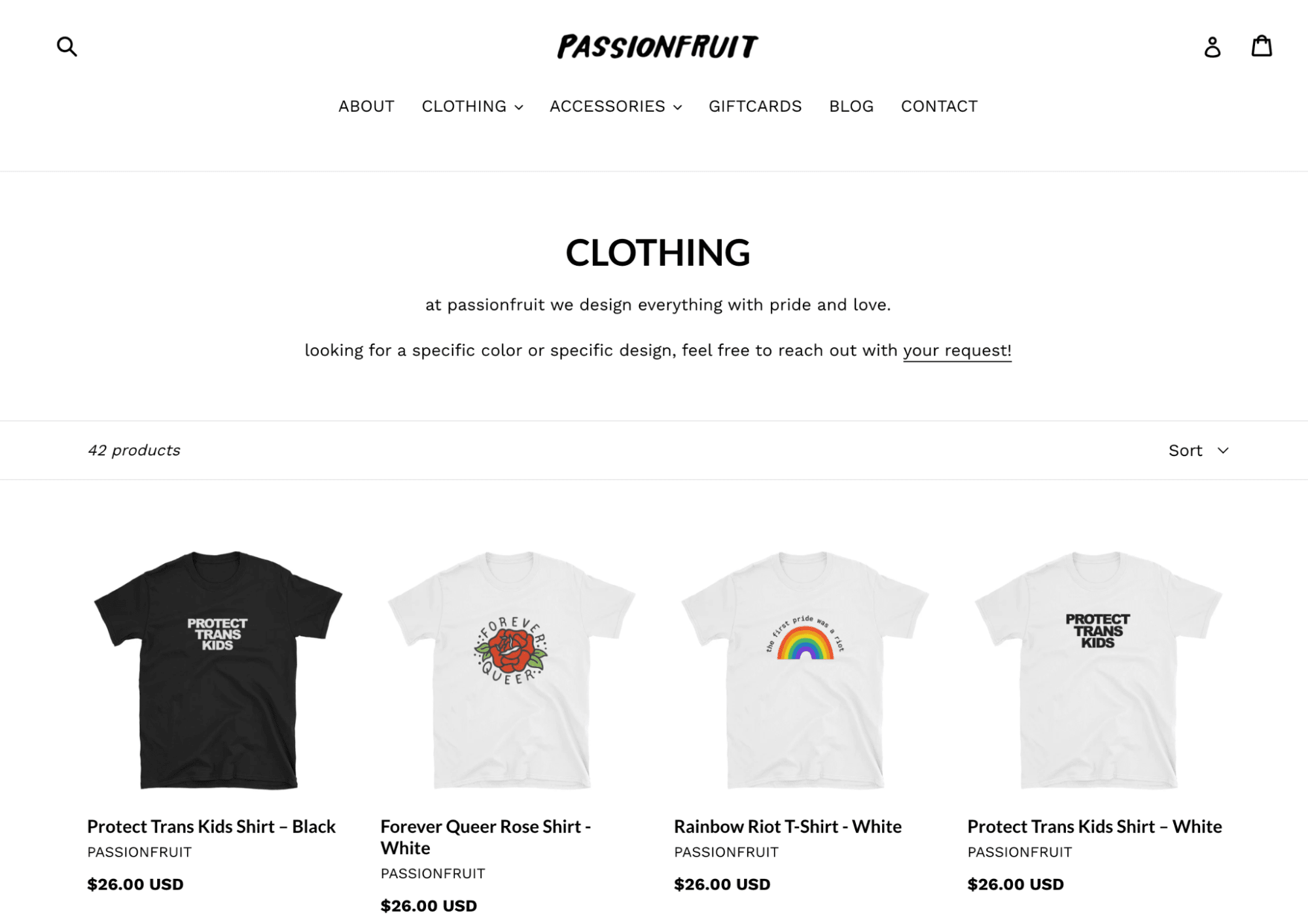
Example of POD store built on Shopify
Some eCommerce platforms you can use are:
Shopify: Perfect for complete brand control with drag-and-drop simplicity, robust POD integrations, and powerful marketing tools, ideal for growing serious businesses.
WooCommerce: Offers ultimate customization freedom with WordPress integration and lower monthly costs, though it requires more technical knowledge to set up and maintain.
Etsy: Provides instant access to millions of ready-to-buy customers, with minimal setup required and built-in trust, making it perfect for testing your market.
Your store should reflect your brand's professionalism, regardless of platform. Invest time in high-quality product photos, clear descriptions, and intuitive navigation. Get website design services from a Fiverr professional if you’re stuck.
💡 Pro Tip: Before launching, ask a few friends to test your store's checkout process and provide feedback on the overall shopping experience. This real-world testing can reveal improvements needed for your store's success.
7. Promote your store
Marketing your POD store effectively can transform it from a hidden gem into a thriving business. Your marketing success relies on choosing the right channels and executing them well:
Social media: Turn platforms like Instagram, Pinterest, and TikTok into visual showcases for your products, with engaging content that turns followers into customers.
Search Engine Optimization: Make your store discoverable through strategic keywords, compelling product descriptions, and regular content updates that Google loves.
Email marketing: Build a community around your brand through newsletters that share exclusive designs, early access, and special offers with your most loyal fans.
Strategic partnerships: Collaborate with relevant influencers to tap into established audiences that match your target market.
Consistent marketing efforts yield better results than sporadic campaigns. Create a content calendar and stick to it, even when immediate results aren't visible.
Consider getting these services from the best experts on Fiverr to kickstart your marketing:
A social media marketing services to create and schedule engaging posts
An SEO services to optimize your product listings and store
An email marketing strategy services to set up automated campaigns that convert
Potential challenges when starting a POD business
The print-on-demand business model has many perks, but it's good to be ready for challenges. Let’s dive into these a bit more to help you understand it.
Product quality control
Print-on-demand products often suffer from inconsistent quality and poor printing, which can damage your brand reputation and disappoint your customer base.
To maintain standards, place regular test orders, partner with reputable print-on-demand platforms, start small to scale gradually, and collect customer feedback to catch issues early.
Thin profit margins
Print-on-demand's production costs result in lower profit margins compared to traditional bulk manufacturing.
To boost profitability, consider total costs when pricing and try to use local suppliers to reduce shipping costs. You can also focus on premium items that command higher prices.
High competition
As the print-on-demand market becomes increasingly crowded, standing out requires a strong eCommerce marketing strategy. Focus on unique designs for specific audiences and building a presence on Instagram and TikTok to expand your reach.
Legal and tax considerations
Operating an eCommerce business may seem straightforward, but you need to stay on top of legal and tax matters:
Copyright issues: Be sure that any designs you use are either your own or licensed appropriately. Copying someone else's work can lead to legal action.
Trademark protections: Registering your brand and logos as trademarks can protect your intellectual property.
Sales tax regulations: With eCommerce, sales tax laws vary by state or country. Be sure to stay compliant, especially if you sell internationally. Consider consulting a tax professional.
Terms of service compliance: Always ensure that your POD platform’s terms are followed, especially regarding content and product categories.
Hire a talent to help build your POS business
Launching a print-on-demand business is easier when you have the right support. Whether you need designers to create custom artwork, Shopify developers to set up your online store, or a virtual assistant to handle administrative tasks, Fiverr offers a wide range of talented services.
With Fiverr, you can find the right talent to fill any gap in your POD business, helping you build and grow your brand efficiently. Whether you need to outsource product designs or develop a comprehensive marketing strategy, Fiverr freelancers support every aspect of your business.
Join Fiverr today and hire the best talent worldwide to start your own POD business.
Start a POD business FAQ
Is print-on-demand business profitable?
Print-on-demand’s profitability is determined by niche, price, and marketing strategy. Even if your profit margins are low due to production costs, you can increase them by selling unique designs or high-quality goods. Your business requires a solid marketing strategy to stand out and attract customers.
Do I need a business license to sell on Printify?
You rarely need a business license to sell through Printify. Your country or state's laws govern this. Consulting a lawyer to ensure compliance is always a good idea, but it's especially important as your company grows.
Is it good to start a print-on-demand business?
Print-on-demand businesses are ideal for low-risk, low-cost start-ups and creatives who want to sell their ideas without managing inventory. With a strong niche and marketing strategy, a POD business can generate consistent revenue as a full-time or part-time business.
Can you become a millionaire from print-on-demand?
POD businesses can be very profitable, but becoming a millionaire requires a plan, hard work, and growth. Some business owners succeed by finding a niche, making great products, and using smart marketing. POD is not a passive income scheme for becoming a millionaire.


